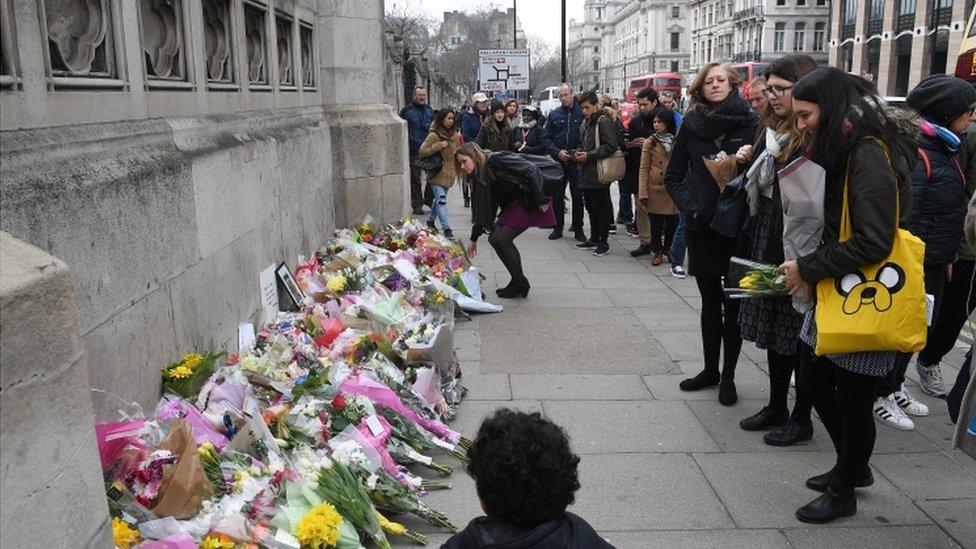London attack: How can we be protected from terrorism?
- Published
The attack in Westminster, on Wednesday, 22 March, left four victims dead, dozens injured and millions of people around the world asking why.
In the aftermath of Khalid Masood's assault on London, the BBC received a number of questions from people concerned about safety and security on our streets.
Here, BBC London's home affairs correspondent Nick Beake answers the most popular.

Why don't the unarmed police officers at Westminster have protective body gear, stab- or bulletproof vests? And do they carry Tasers?
Nick Beake: PC Keith Palmer was an unarmed officer protecting the Palace of Westminster, but Scotland Yard says he was wearing a protective vest at the time of the attack.
The force said during the post-mortem examination "the pathologist could find no obvious evidence of damage or penetration other than the vest having been cut off during emergency first aid at the scene".
Armed officers working at Parliament carry a primary weapon, a sidearm and a Taser.
And an unspecified number of armed response vehicles - three firearms specialists in an unmarked car - are on constant patrol in central London.

Will the pavement safety barriers removed from nearby London Bridge be restored?
Nick Beake: The use of safety barriers varies from location to location.
The police, local authorities and transport bosses will all discuss where to install extra measures to protect the public.
The mayor of London's office says it is currently considering where more barriers could be installed.

Why not build a 6in [15cm] concrete barrier on the bridge pavements to protect pedestrians from the traffic?
Nick Beake: An independent review commissioned by the Mayor of London, Sadiq Khan, last year recommended that more bollards be installed in busy parts of London to protect pedestrians from a Nice- or Berlin-style attack, where lorries were driven into crowds.
The report author, Lord Harris of Haringey, also called on the authorities to make more use of temporary barriers during big public events.

What is the correct immediate response for members of the public caught up in this sort of attack?
Nick Beake: The current terrorist threat is rated as "severe", which means an attack is highly likely.
The latest advice from the government is to run away from the danger, hide if that is not possible, and then tell the authorities: "Run, hide, tell."
More information can be found on the gov.uk website, external.

What should we do if we see something suspicious?
Nick Beake: If you spot something suspicious, ring the anti-terror hotline on 0800 789 321. And call 999 if you think there is an immediate threat.

How do we know if something that seems suspicious is actually terrorism-related?
Nick Beake: It can be hard for experienced police and other investigators to establish quickly if a threat is terrorist-related, but the authorities would rather the public contact them with their genuine concerns however small they may be. It's better to be safe than sorry.
